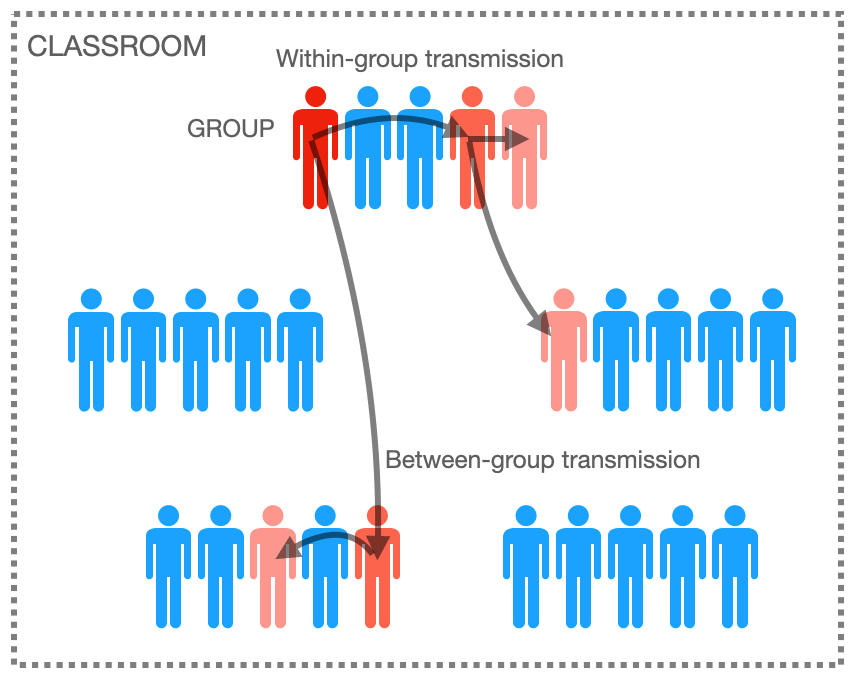Here’s What Scientists Say Is Needed to Prevent Large COVID-19 Outbreaks in Schools
0 View
Share this Video
- Publish Date:
- 8 July, 2021
- Category:
- Covid
- Video License
- Standard License
- Imported From:
- Youtube
Tags

Image of classroom transfer. The class has five groups of students who are considered close contacts. The index case (dark red) is in a class in which all other students are susceptible. The index case can infect some other students directly (medium red), and they can infect others (light red). Transfer can occur within groups and between groups (at a slower rate). Credit: Paul Tupper (CC BY 4.0)
Regular monitoring may be the only way to prevent major COVID-19 outbreaks in schools. New simulations suggest that waiting for a student to test positive is too late for prevention.
A new study examines factors underlying COVID-19 outbreaks in schools and suggests that major outbreaks can only be prevented by regularly monitoring everyone in the school environment. Paul Tupper and Caroline Colijn of Simon Fraser University, Canada, present these findings in the open-access journal PLOS Computational Biology.
Data from around the world shows widely varying results for COVID-19 clusters in schools, with some institutions experiencing many major outbreaks and others minor problems. The factors underlying this variability are unclear, as are the most effective strategies to prevent major outbreaks.
To better understand the COVID-19 dynamics in schools, Tupper and Colijn used a mathematical model to simulate the spread of disease in the classroom. The simulations include two factors that can influence the severity of the outbreak: differences between infected individuals in how easily they can transmit the disease to others, and differences in transmission rates for different environments and activities.
The simulations showed that in a classroom of 25 students, anywhere from 0 to 20 students can become infected after exposure, depending on even minor adjustments to transmission rates for infected individuals or environments.
The researchers then simulated the effects of different protocols to prevent large clusters. They found that, in high-speed transfer scenarios, preventive actions (such as closing an entire class) that took effect only after a student developed symptoms and tested positive were too slow to prevent major outbreaks. Large clusters could actually only be prevented by regularly monitoring everyone in the setting, for example with pooled rapid tests on location.
“We found that waiting for a student to develop symptoms and test positive is too slow a response, even though it was the method used in many jurisdictions to prevent transmission of COVID-19,” Tupper says. “Screening students without symptoms works quite well in our model and could also be applied to workplaces or shared living quarters.”
The scientists plan to include additional data and expand their model to explore the best strategies to prevent spreading after a case has been detected, both in classrooms and other environments.
Reference: “COVID-19 in Schools: Reduction of Classroom Clusters in the Context of Variable Transmission” by Tupper P, Colijn C, PLOS Computational Biology.
DOI: 10.1371/journal.pcbi.1009120
Funding: PT was supported by a Natural Science and Engineering Research Council (Canada) Discovery Grant, RGPIN-2019-06911. They played no part in the study design, data collection and analysis, the decision to publish the manuscript, or the preparation of the manuscript. CC was supported by a Genome BC grant, COV-142. They played no part in the study design, data collection and analysis, the decision to publish the manuscript, or the preparation of the manuscript.










